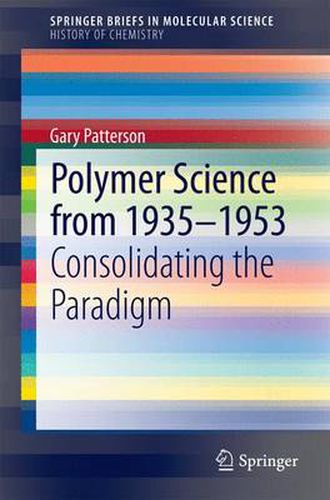Readings Newsletter
Become a Readings Member to make your shopping experience even easier.
Sign in or sign up for free!
You’re not far away from qualifying for FREE standard shipping within Australia
You’ve qualified for FREE standard shipping within Australia
The cart is loading…






This title is printed to order. This book may have been self-published. If so, we cannot guarantee the quality of the content. In the main most books will have gone through the editing process however some may not. We therefore suggest that you be aware of this before ordering this book. If in doubt check either the author or publisher’s details as we are unable to accept any returns unless they are faulty. Please contact us if you have any questions.
This sequel to A Prehistory of Polymer Science begins with the Faraday Discussion of 1935 on Polymerization. Patterson then examines the remarkable rise and establishment of polymer science after 1935 from the perspective of the emergence of strong intellectual leaders. While enough biographical detail is presented to gain an appreciation for the role played by each leader, the emphasis of this volume is on the key concepts associated with each individual and how the community embraced these leaders.
$9.00 standard shipping within Australia
FREE standard shipping within Australia for orders over $100.00
Express & International shipping calculated at checkout
This title is printed to order. This book may have been self-published. If so, we cannot guarantee the quality of the content. In the main most books will have gone through the editing process however some may not. We therefore suggest that you be aware of this before ordering this book. If in doubt check either the author or publisher’s details as we are unable to accept any returns unless they are faulty. Please contact us if you have any questions.
This sequel to A Prehistory of Polymer Science begins with the Faraday Discussion of 1935 on Polymerization. Patterson then examines the remarkable rise and establishment of polymer science after 1935 from the perspective of the emergence of strong intellectual leaders. While enough biographical detail is presented to gain an appreciation for the role played by each leader, the emphasis of this volume is on the key concepts associated with each individual and how the community embraced these leaders.